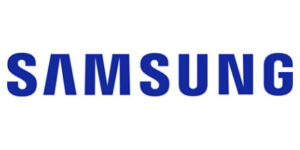
Background
Samsung Electronics Co., Ltd., part of the larger Samsung Group, has 15 regional offices across the globe and operates across 73 different countries. The company is best known for its smartphone devices, primarily its Galaxy S-series, the latest iteration of which is currently the Samsung Galaxy S9 (released in March 2018). Samsung has created an ecosystem built around its smartphone products, and it is the company’s Gear VR headset and Samsung VR online service that are the part of this ecosystem that provide Samsung’s main offering to the Augmented and Virtual Reality markets.
Samsung Electronics breaks its business down into three operating divisions. The first is its Consumer Electronics (CE) Division, which manufactures and sells TVs, monitors, refrigerators, washing machines, medical devices, and other electronics. The second is its IT & Mobile Communications (IM) Division, which manufactures and sells smartphones, computers, network systems, and other telecommunications devices. Finally, its third division is the Device Solutions (DS) Division, which manufactures and sells DRAM, NAND flash, mobile SoCs (System-on-Chips), and other components for use in IT and mobile devices.
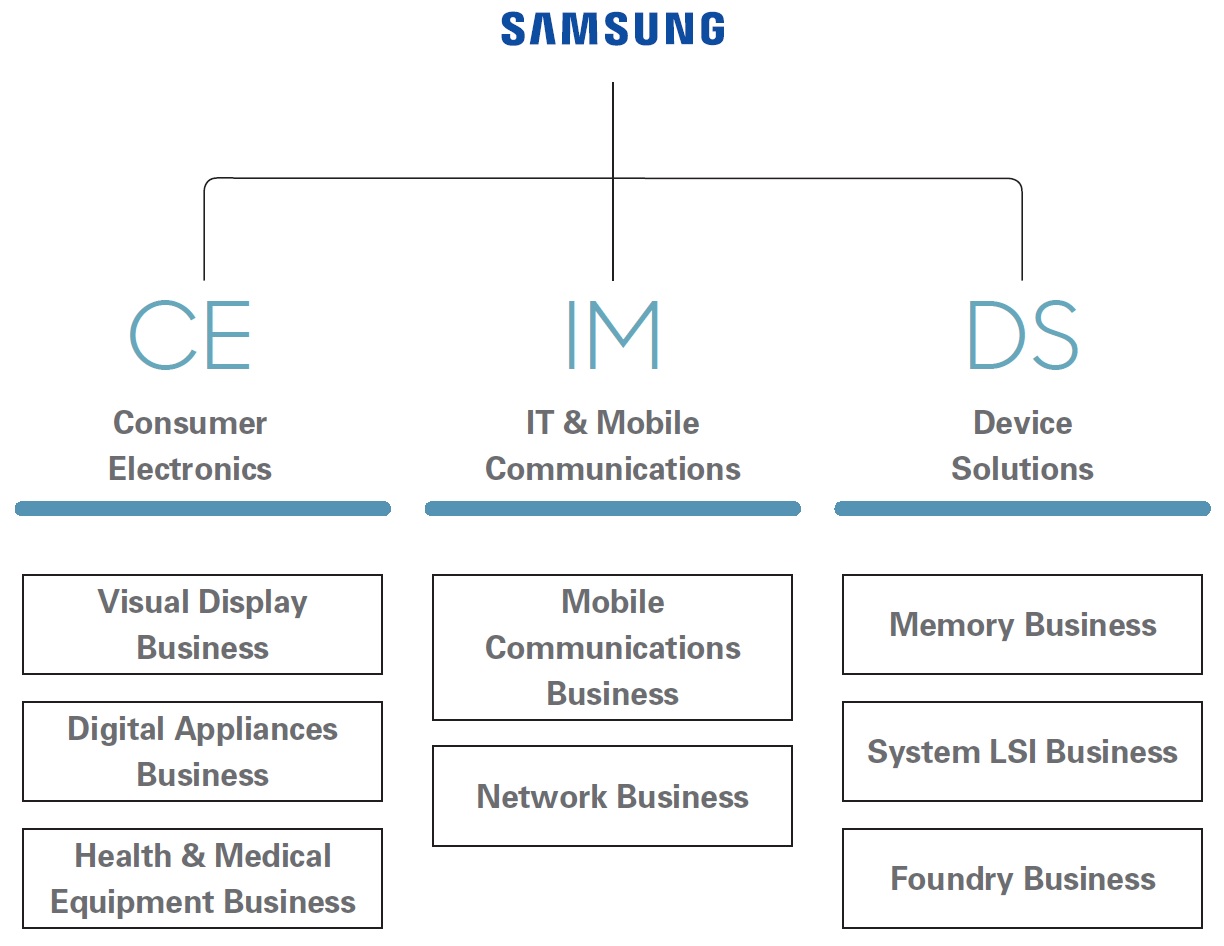
Source: Samsung
Samsung’s VR offering, which mainly consists of the company’s Gear VR headset and Gear 360 camera hardware, is included within the IM division. The company also notes that an increase in demand for AR and VR products has led them to be proactive in their response for expanding their lineup of advanced memory products. The DS division is therefore responsible for memory semiconductor technology that is utilized in many devices with AR and VR applications.
The company first ventured into the VR market back in 2014, with the launch of its Gear VR Innovator Edition headset. A year later in September 2015, Samsung launched its consumer edition of the Gear VR headset. This consumer version of Gear VR has seen some updates and improvements since it was first launched, and has also seen the introduction of a handheld controller, for use when navigating VR content whilst wearing the headset. Prior to this controller, Gear VR owners were able to utilize Xbox wireless controller compatibility, which was introduced in 2016.
Today, Samsung is certainly a key player in the VR market, particularly when it comes to bringing VR to the masses and increasing user adoption of the technology. Samsung has stated that it aims to make VR “more affordable, accessible and relevant to consumers and enterprises of all sizes”. The company is well placed to do this as well, as Samsung’s 2017 annual report indicated that it was leading the global mobile phone market in 2016, with a 19.2% market share. This figure grew to 21.9% by the end of 2017, according to an article by Fortune.
This market share doesn’t exactly reflect Samsung’s VR compatible devices, as most of the company’s lower-end models will not have the specifications required to properly run VR applications – in fact, Samsung’s VR offering is mainly limited to their flagship Galaxy S series product line. However, it does demonstrate that the company certainly has the potential to really push consumer VR further and grow its VR user base to its existing smartphone users.
Although VR is not the center of Samsung’s focus, it has stated that one of the aims of its IT & Mobile Communications (IM) division is to “respond to varied consumer demand through its wearable products – Gear S3, and VR – that cater to the customer needs”.
2018 saw Samsung launch a new initiative that added original episodic VR content to the Samsung VR video service. The initiative, named ‘Pilot Season’, is part of the company’s efforts to expand its VR content offering and drive growth within the independent VR filmmaker community. Samsung’s Pilot Season initiative was also a chance for the company to demonstrate the capabilities of its 360 Round camera, a 360 degree camera which can be used for the creation of VR video content. The camera was launched in October 2017. This was the second 360 degree camera that Samsung announced in 2017, as earlier in the year, it also launched an updated version of its Gear 360 camera.
In February 2017, the company launched a new version of its Gear VR headset, powered by Oculus. This 2017 model was the version which also featured a handheld controller, and was the company’s first ever Gear VR headset to include this. Gear VR was made compatible with Xbox wireless controllers in September 2016, and the new controller that is included with the headset now means users can interact with VR content with the Gear VR straight out of the box.
Samsung has several partnerships in place across various industry verticals, and partners with the likes of international sports teams, music festivals, healthcare providers, and retailers to name but a few. However, it seems that Samsung’s focus is mainly pointed towards consumer recreational VR experiences, through the use of its online Samsung VR portal, as well as its offering to the healthcare sector.
One good example of Samsung’s healthcare collaboration is the company’s Relúmĭno application, which works in conjunction with the Samsung Gear VR headset to help people living with low vision to see the world more clearly. Or, as Samsung puts it: “to provide something more approachable and affordable by using smartphones and virtual reality which are both widely used today.” The benefit of Relúmĭno is that smartphones and Gear VR replace visual aid products, which are often costly. Samsung has said that it is continuing to improve its Relúmĭno application in order to help users, and that its C-Lab (Creative Lab) is also working on a new model in the form of eyeglasses that are as small and as convenient as sunglasses.
Looking forward, the company doesn’t always comment on what its future strategy for VR involves. However, it does state that its outlook for 2019 will involve the expansion of its flagship smartphone sales by offering new designs and an enhanced lineup. It could therefore be inferred from this that the company’s work on its VR accessories, which form part of this wider smartphone ecosystem, will also continue to grow.
Markets and Industry Verticals
[one_half]Markets
Augmented Reality
Virtual Reality
Mixed Reality
Hardware
- Cameras
- Headsets
- Memory
- Microchips
- Mobile Devices
Software
- Mobile Apps
- Position Tracking[/one_half]
[one_half_last]Industry Verticals
Consumer Retail
Creative
Entertainment
Gaming
Healthcare
Media
Sports
[/one_half_last]
Products
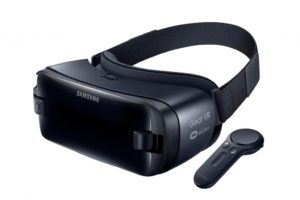 Samsung's main product offering to the VR market is its Gear VR headset, which is compatible with the majority of the company's flagship smartphones, and also comes with a single handheld controller. The company also has its Samsung VR online service, where users can find a range of VR content. Samsung Gear VR owners also have access to exclusive content that is available on the Samsung VR online portal.
Samsung's main product offering to the VR market is its Gear VR headset, which is compatible with the majority of the company's flagship smartphones, and also comes with a single handheld controller. The company also has its Samsung VR online service, where users can find a range of VR content. Samsung Gear VR owners also have access to exclusive content that is available on the Samsung VR online portal.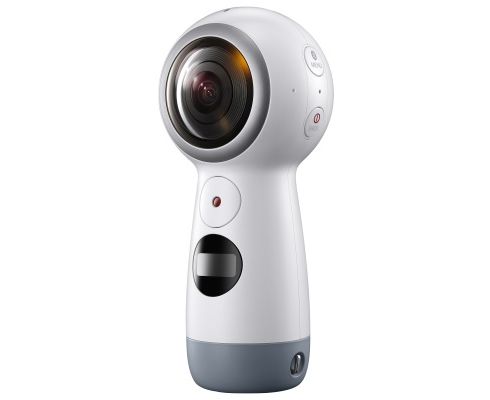
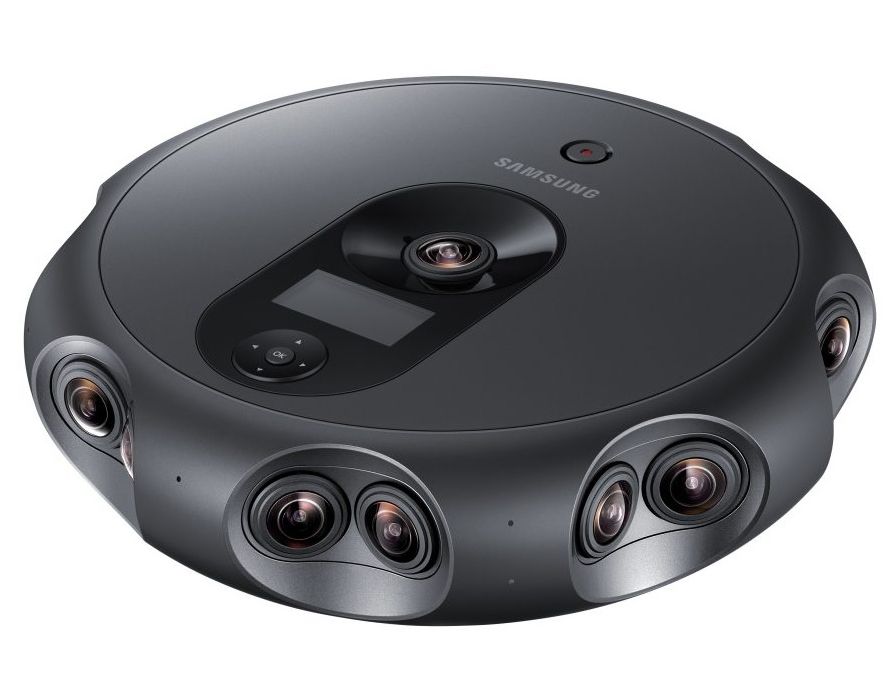 In addition to the Gear VR, Samsung makes a host of peripheral devices that are aimed at VR content production. These include the Samsung Gear 360 and Samsung 360 Round, which are both 360 degree cameras for VR content capturing in the form of 360 degree pictures and videos.
In addition to the Gear VR, Samsung makes a host of peripheral devices that are aimed at VR content production. These include the Samsung Gear 360 and Samsung 360 Round, which are both 360 degree cameras for VR content capturing in the form of 360 degree pictures and videos.
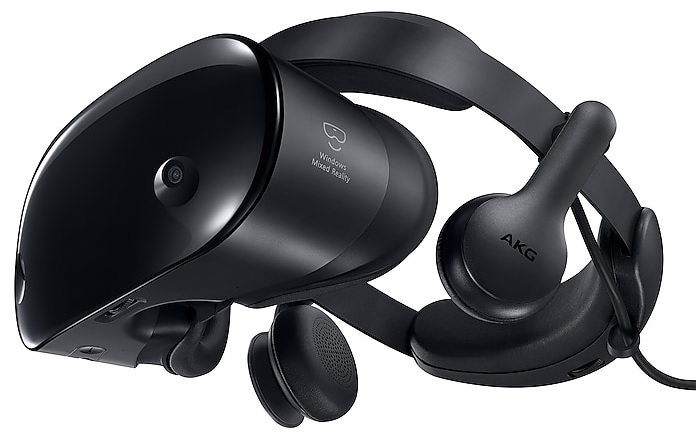 The company also produces a Mixed Reality headset, the Samsung Odyssey headset, which was announced in October 2017 in partnership with Microsoft. The headset and controllers are designed for use with Windows Mixed Reality, and provide a 110-degree field of view, and includes a Six Degrees of Freedom (6 DOF) sensor.
The company also produces a Mixed Reality headset, the Samsung Odyssey headset, which was announced in October 2017 in partnership with Microsoft. The headset and controllers are designed for use with Windows Mixed Reality, and provide a 110-degree field of view, and includes a Six Degrees of Freedom (6 DOF) sensor.
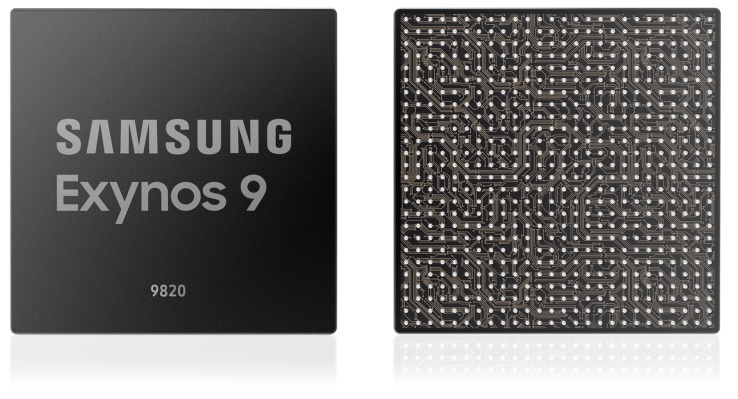 Samsung is one of the world’s leading microchip manufacturers, and in November 2018 Samsung announced its latest offering to the sector – its Exynos 9 Series 9820 application processor, which the company states will have applications in the augmented & virtual reality domain due to its processing power. In August 2018, the company also announced its 16-gigabit GDDR6 memory chipset, which too has applications for use in a variety of fields, including video processing and AR/VR.
Samsung is one of the world’s leading microchip manufacturers, and in November 2018 Samsung announced its latest offering to the sector – its Exynos 9 Series 9820 application processor, which the company states will have applications in the augmented & virtual reality domain due to its processing power. In August 2018, the company also announced its 16-gigabit GDDR6 memory chipset, which too has applications for use in a variety of fields, including video processing and AR/VR.
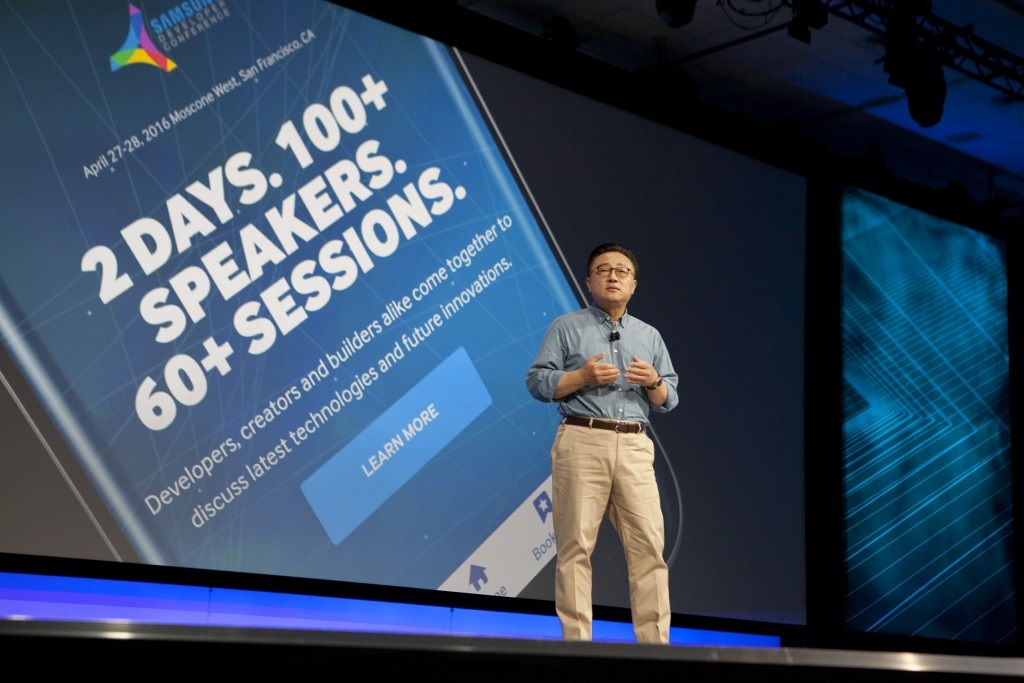 Looking forward, Samsung has not mentioned much about releasing a new or updated version of its Gear VR headset. In fact, it seems possible that the company will put its efforts in to the development of a hybrid VR/AR headset instead. According to an interview with Lowyat.net in October 2018, DJ Koh, CEO of Samsung’s Mobile Division, hinted at the possible future release of a headset that incorporates both VR and AR. This is off the back of Koh’s comments in the same interview, where he stated that Samsung has identified and is working to overcome two obstacles when it comes to its VR headsets. The first is an issue of content, and the second is an issue of user comfort when wearing a headset.
Looking forward, Samsung has not mentioned much about releasing a new or updated version of its Gear VR headset. In fact, it seems possible that the company will put its efforts in to the development of a hybrid VR/AR headset instead. According to an interview with Lowyat.net in October 2018, DJ Koh, CEO of Samsung’s Mobile Division, hinted at the possible future release of a headset that incorporates both VR and AR. This is off the back of Koh’s comments in the same interview, where he stated that Samsung has identified and is working to overcome two obstacles when it comes to its VR headsets. The first is an issue of content, and the second is an issue of user comfort when wearing a headset.
Image credit: Samsung
Company Information
Address
Samsung Digital City,
129 Samseong-ro, Maetan-dong, Yeongtong-gu,
Suwon, Gyeonggi Province
South Korea
Company Size
320,671 (as of 2018)
Company Email Format
Email formats for Samsung seem to vary widely. Examples include:
firstinitial.lastname@samsung.com
e.g.: j.smith@samsung.com
firstinitialsecondinitial.lastname@samsung.com
e.g.: jk.smith@samsung.com
firstname.lastname@samsung.com
e.g.: john.smith@samsung.com
Website
www.samsung.com
Key Contacts / Company Structure
Vice Chairman and CEO, Samsung Electronics Co., Ltd./President & CEO, Device Solutions (DS) – Kin Nam Kim
President & CEO, Consumer Electronics (CE) – Hyun Suk Kim
President & CEO, IT & Mobile Communications (IM) – Dong Jin Koh
President & CEO, Samsung Electronics Africa– Sung Yoon
President & CEO, Samsung Electronics America – Young Hoon Eom
President & CEO, Samsung Electronics North America – Tim Baxter
Senior Vice President, General Manager, Samsung Electronics America – Justin Denison
Director, Product Strategy & Marketing - Mobile Computing, Samsung Electronics America – Hassan Anjum
Director, Product Marketing, Samsung Electronics America – Jonathan Wong
General Manager/ Head of Product Marketing, Mobile Computing, Samsung Electronics North America – Shoneel Kolhatkar
Senior Manager, Virtual Reality & Immersive Products Strategy, Samsung Electronics America – Stephen Hawke
Information up to date as of January 2, 2019
News
[smart_post_show id="10707"]
